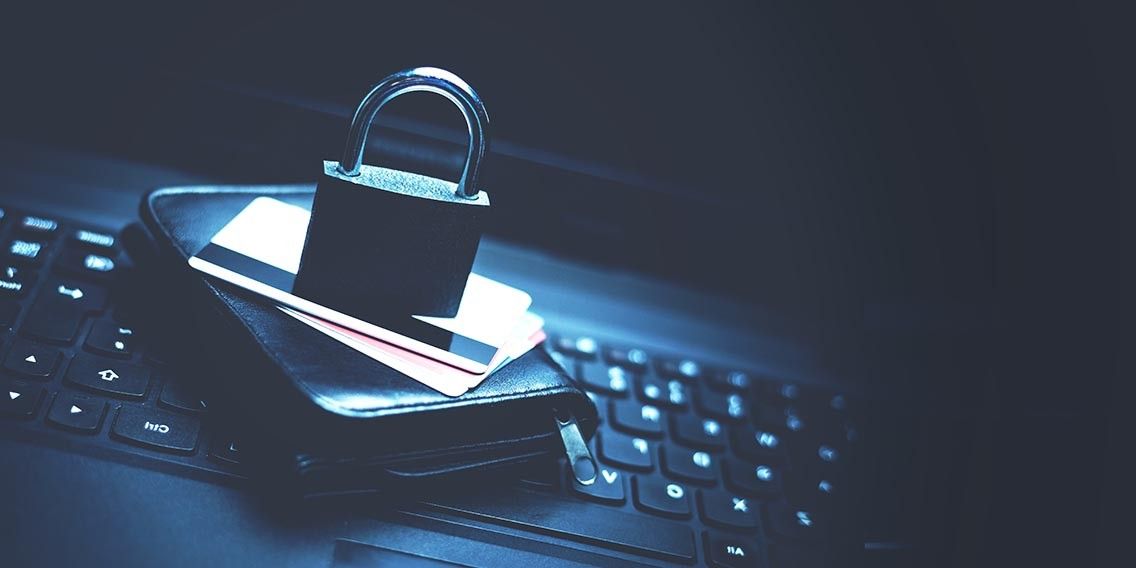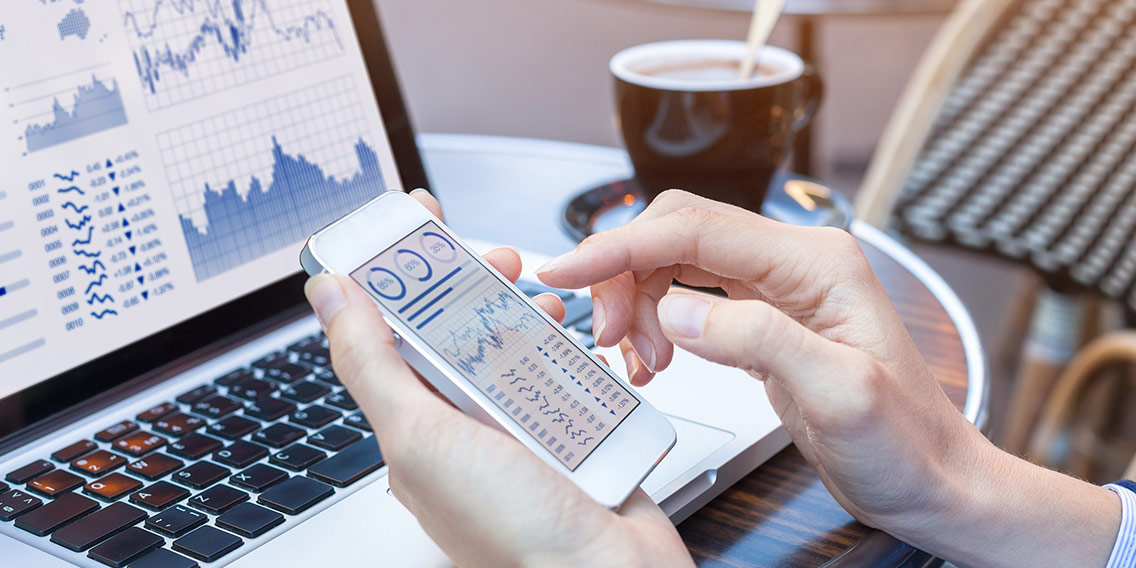SECURITY
How to Recognize and Prevent Credit Card Fraud
EXPECTED READ TIME: 9 MINUTES
It's early January, and you're skimming your credit card statement from December. That's when you notice a $500 charge from Amazon.
You begin digging through your receipts but can't find one that matches the date and amount of this transaction. And then it hits you: You're the victim of credit card fraud.
To prevent more phony purchases from being made in your name, you need to get moving now — and establish some safeguards for the future. Here's how.
What Is Credit Card Fraud?
Credit card fraud is a form of identity theft. Someone you don't authorize uses your card or account number to make charges or obtain cash advances.
How Common Is Credit Card Fraud?
Credit card fraud is the second-most common form of identity theft in the United States, behind government documents and benefits fraud.
Of the nearly 1.4 million incidents of identity theft reported to the Federal Trade Commission (FTC) in 2020, more than 393,000 cases were attributed to credit card fraud. What's more, credit card fraud cost cardholders in the U.S. roughly $149 million for that same year.
Here are some additional stats and numbers concerning credit card fraud:
- Prior to 2020, credit card fraud was the leading type of identity theft for four straight years.
- Fraud committed with new credit card accounts rose to 365,597 cases in 2020, an increase of 48% increase from 2019.
- Credit card fraud was the most common form of identity theft among people between ages 20-39, accounting for 176,731 reported cases in 2020.
Don't expect these numbers to decrease anytime soon. The ongoing explosion of e-commerce and continued migration to a digital society means credit cards will remain popular targets for fraud.
Types of Credit Card Fraud
In years past, credit card fraud was primarily linked to lost or stolen cards being used by someone else for in-person purchases. For example, a thief might snatch your card from a restaurant table and then go to a department store and ring up hundreds of dollars in charges.
Although this type of fraud still happens, crooks have gotten a bit more sophisticated with their tricks. Here's how today's credit card schemes stack up:
- Account Takeover: In this scam, a fraudster contacts your card issuer pretending to be you, then changes PINs, passwords, and other account details or orders a new card and has it sent to their address.
- Counterfeit Cards: Slightly more advanced than dumpster diving, crooks will place a "skimmer" over the card slot on an ATM or a gas pump to collect your data and make a duplicate card for illegal use.
- Application Fraud: Thieves often steal mail, dig through trash, or skim cards to gather personal information like your home address, Social Security number, and birth date so they can apply for a new card in your name.
- Card-Not-Present Fraud: Criminals have largely shifted to card-not-present (CNP) fraud, a con in which they hijack credit card numbers — most often by hacking or phishing — and carry out fraudulent transactions either online, over the phone, or by mail.
Regardless of the approach, credit card fraud is an invasion of privacy that can leave you physically, financially, and emotionally vulnerable.
How to Prevent Credit Card Fraud
Remember the old adage about an ounce of prevention being worth a pound of cure? The same concept applies to protecting against credit card fraud.
Even if your card company monitors your account activity for free — and most do — you can boost your level of defense with these tips:
Protect Your Plastic
Physical security is the first, and most basic, safeguard against credit card theft and fraud. You can reduce the chances that your card or account number is lost or stolen by:
- Carrying only the cards you use and keeping them with you at all times
- Putting cards you no longer use in a safe or bank lockbox
- Shredding old bank statements and expired cards before throwing them away
- Not sharing your account number over the phone unless you initiate the call
- Never leaving account information in plain sight or writing it on a piece of paper
As a rule, you should also limit who you let use your card. It may be convenient to give your teenager (or even your spouse) your card to buy a gallon of milk at the grocery store, but that just increases the chances of your card being misplaced, skimmed, or stolen.
Practice Sound Cyber Safety
Now that credit card fraud is largely a digital endeavor, many of the same strategies that make it safer to work remotely will help keep your card accounts secure. Essential cybersecurity best practices include:
- Securing your home network connections and avoiding public Wi-Fi
- Enabling two-factor authentication on your computer, phone, and other digital devices
- Verifying websites are secure (the URL begins with "https") before making online transactions
- Clicking "No" when a site prompts you to remember your credit card number
- Creating strong passwords for all of your online accounts and digital devices
For added protection, you should brush up on how to identify phishing emails and protect your phone from hacks.
Set Up Transaction Alerts
Many credit card companies allow you to set mobile alerts to monitor spending, track payments, and protect against fraud and identity theft. With these security features, you'll receive a notification on your phone when purchases exceed a certain limit, if transactions are attempted internationally, or if suspicious activity is detected on your account.
For instance, if your card is used in London to buy a pint of Newcastle and an order of fish and chips, you'll get an alert from your card issuer. No big deal if you're traveling across Europe and stopped at a pub for something to eat. But if you're at home in California when you receive this type of message, something is obviously amiss.
Scrutinize Your Statement
Rather than simply looking at the bill total, get in the habit of carefully reviewing your monthly credit card statement. Verify all transactions and ensure you were charged the right amount for each one. If you spot unauthorized purchases or discrepancies with the charges, contact your credit card company immediately.
Check Your Credit Report
Your credit report provides a breakdown of your current and past debts, including a payment history for your credit card and other accounts. Routinely monitoring your report can help you identify credit card fraud and identity theft. You're entitled to a free credit report every year, so be sure to request yours and confirm all your information is correct.
Signs of Credit Card Fraud
You'll generally notice one or more red flags if fraudsters gain access to your account and start using your card. Common warning signs include:
- Charges on your monthly statements that you don't recognize
- Blocked access to your account
- Rejected transactions when you try to use your card
- Changes to your credit report that you didn't authorize
- Calls from creditors or collection agencies
- A lower available credit balance on your account
If you experience any of these issues with your card, chances are good that your credit card account has been compromised in some way.
What to Do if You Suspect Credit Card Fraud
If you suspect — or in fact know — you're the victim of credit card fraud, take heart: By law, the maximum amount of unauthorized transactions you can be held liable for is $50.
That said, act quickly when your credit card or account number has been stolen or compromised. This will help minimize the damage and start the process of getting your financial affairs back in order. Be sure to follow these three steps:
Step 1: Alert Your Credit Card Company
The first thing to do if you detect illegal activity is contact your credit card issuer and explain the situation. You should be able to find a toll-free number for a lost or stolen card on the back of your card or on the company's website.
Depending on the company's policies, you'll probably be guided through the process of closing or freezing your account to prevent new charges from being made. It's also a good idea to change any login information and PINs connected to your card.
Step 2: Notify a Credit Bureau
Next, you should place a fraud alert on your credit record with one of the three main credit bureaus (Equifax, Experian, or TransUnion). Fraud alerts instruct lenders to contact you directly to verify your identity before extending new credit in your name.
When you place a fraud alert on your credit file at one agency, it automatically applies alerts at all three bureaus. Most fraud alerts expire after a year (or you can lift it before then by contacting one of the credit bureaus).
You can also put a credit freeze on your credit report. When your credit report is frozen, financial institutions and other lenders won't issue loans or extend lines of credit because they can't review your credit history. This makes it more difficult for identity thieves to make purchases or open new accounts in your name.
To freeze your credit report, visit the nation's three main credit bureaus individually online or call each directly:
- Equifax: 888-298-0045
- Experian: 888-397-3742
- TransUnion: 888-909-8872
Once activated, a credit freeze secures your credit file until you lift it. You can also leave the freeze in place permanently as a preventative measure.
Step 3: File a Report With the FTC
Finally, since credit card fraud falls under the larger category of identity theft, you'll want to file a complaint with the FTC. The information you provide will be used to create your Identity Theft Report and recovery plan, which in turn proves to businesses that someone stole your identity and guarantees you certain rights.
At a minimum, you should report fraud to the FTC by filling out a quick report online. This won't resolve your individual case, but the report can be used to investigate and bring cases against fraud, scams, and bad business practices.
The Takeaway
Credit card fraud impacts thousands of people each year, leading to an array of short- and long-term financial headaches.
Fortunately, there are some simple strategies to protect yourself from being victimized, plus numerous resources to help you recover in the event that you are targeted by fraudsters.
The keys are to be proactive, remain vigilant, and respond quickly. That way you can enjoy the convenience of purchasing with plastic throughout the year without the threat of theft or fraud.
Have More Questions about Security? PenFed Has Answers.
Learn more about protecting yourself from online theft and threats.




